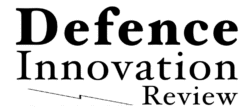In a Berlin conference room, July 2025, a pivotal moment for European defence innovation unfolds. Ukraine and the European Union have launched BraveTech EU, a €100 million ($115 million) public-private defence innovation alliance. This marks the first time the EU has funded a tech partnership of this scale with a nation actively engaged in war. Half the funding will come from Ukraine, coordinated by the country’s homegrown defence incubator, Brave1. The remaining funds will be provided by Brussels through the European Defense Fund and the EU Defense Innovation Scheme, with oversight by the European Defense Innovation Office, now headquartered in Kyiv.
The mission is clear: discover, test, and scale wartime technologies that can transform the battlefield. Hackathons are set to begin this fall, with grant funding for deployment expected to be available in 2026. “Modern warfare is innovative, fast, and hybrid,” said Ukraine’s Digital Minister Mykhailo Fedorov. “Ukraine has a unique experience and is ready to share it.”
Behind this carefully chosen language lies a profound shift. Ukraine is no longer just a testing ground; it is becoming a co-architect of how Europe prepares for future war. This transformation is rooted in Ukraine’s rich history of technological innovation and its rapid adaptation to the demands of modern conflict.
Ukraine’s tech sector, once a hub for outsourcing, has pivoted to defence technology with remarkable speed and creativity. In the early 2000s, Ukraine emerged as one of Europe’s largest outsourcing hubs, with engineers fluent in math, English, and C++ selling their skills to the world’s top firms. Multinationals like EPAM, Luxoft, and GlobalLogic hired thousands, opening delivery centres from Kyiv to Kharkiv and Lviv. Ukrainian tech workers earned a reputation for Silicon Valley-level skill at a competitive cost.
By 2021, the IT services sector was exporting over $6 billion annually to more than 100 countries, employing 300,000 people and delivering fast, scalable work without the drag of big-company politics. Ukraine also produced global brands—Grammarly, GitLab, Ajax Systems, Preply, and BetterMe—conceived, built, and led at home.
When the Russian full-scale invasion began, Ukraine’s tech sector adapted swiftly. Teams worked from basements with limited access to electricity, turning Telegram bots into coordination tools, 3D-printed drones into weapons, and AI software into target acquisition systems. “If we stop even for a day or a week, we risk falling behind Russia for good,” says Fedorov. “That’s why many companies are doing R&D, looking at what’s coming in a week, in two weeks, in six months. Everything changes in real time.”
This urgency drives not only speed but also creativity. “There simply cannot be a symmetrical response to Russian aggression,” says Artem Romaniukov, Deputy Minister at the Strategic Industries Ministry. “We always have to invent something asymmetrical to compensate for our lacks. Our people are the most valuable asset we have, and unmanned systems are the way to protect them—doing the job instead of humans.”
The government moved quickly to support this shift. In 2023, it launched Brave1, a functioning pipeline that connects developers with soldiers, funds prototypes, and pushes the best ideas straight to the battlefield. “We set technical tasks for the market, search for solutions, and then scale them—we provide grants and test them at proving grounds and on the battlefield,” Fedorov explains.
By 2024, over 500 defence startups had passed through Brave1. The feedback loop between the frontline and the factory was no longer measured in quarters—it was measured in days. This rapid innovation has drawn serious interest from European and NATO militaries, leading to the creation of BraveTech EU.
BraveTech EU will build on the Brave1 model, running joint hackathons pairing Ukrainian and European startups on live battlefield challenges. The best solutions will move to full production in 2026. “European companies bring strengths in manufacturing and scaling; Ukrainian companies bring battlefield innovation and speed,” says Fedorov. “Together, we can deliver game-changing capabilities.”
For Kyiv, the program is a strategic breakthrough—a bridge between Ukraine’s frontline ingenuity and Europe’s defence procurement systems. Ukrainian tech will be integrated into the European market, co-developed, co-funded, and co-owned. This cooperative spirit already defines Ukraine’s defence-tech sector. “There’s no competition here—only partnerships,” says Romaniukov. “In peacetime, many of these companies would be rivals. Today, they’re exchanging ideas, asking questions, and proposing solutions together.”
Artem Moroz, Head of Investment at Brave1, sees
